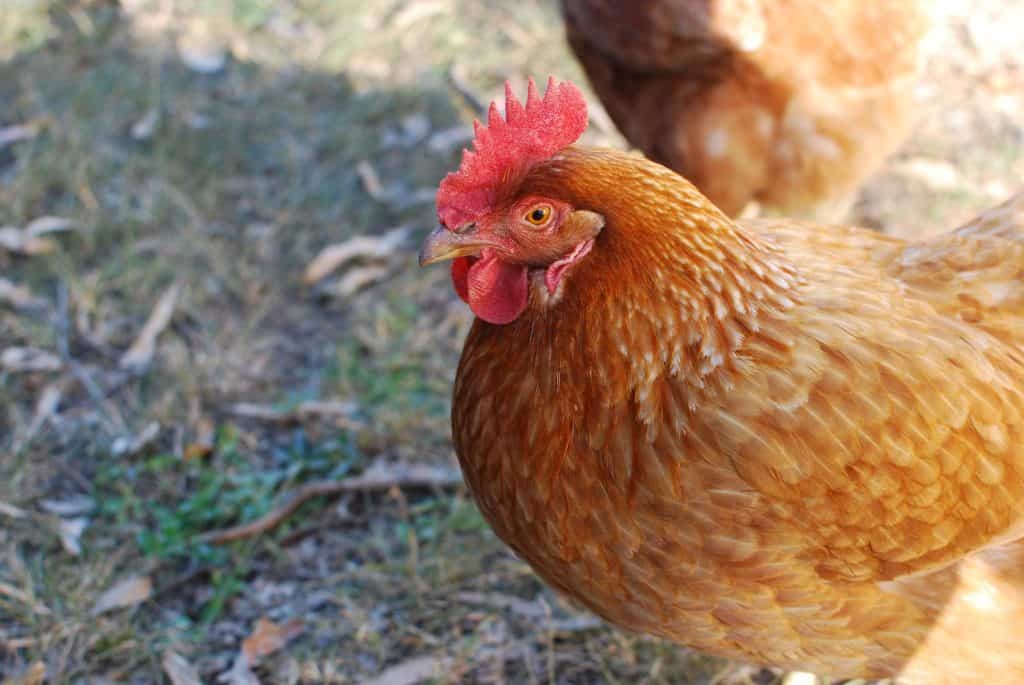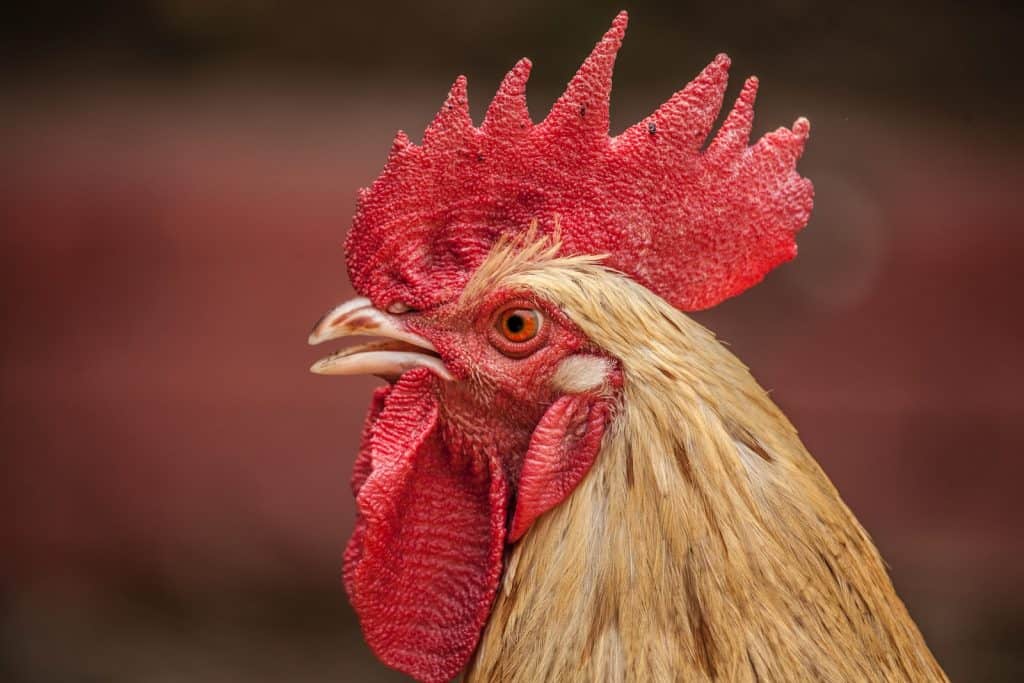
The Buff Orpington chicken has become a classic backyard chicken breed. They are a modern breed that is designed to produce a double-purpose chicken with maximum potential. This means they can be larger and more productive as an egg layer.
Buff Orpingtons were created in 1926 and have been a favorite of many urban chicken keepers as well as chicken farmers. There are many Orpingtons to choose from, but the Buff is the most well-known.
We will discuss their history, benefits, and care.
Here are some quick facts about Buff Orpington Chicken
| Species Name: | Gallus gallus domesticus |
| Family: | Phasianidae |
| Care Level | Low |
| Temperament: | Placid, friendly, docile |
| Color Form: | Buff |
| Lifespan: | 8 Years |
| Size: | 6-10 lb |
| Diet: | Greens, grain, insects |
| Minimum Coop Size: | 10 square feet per chicken |
| Coop Set-Up | Wooden coop with a free-range yard |
| Compatibility: | High |
Buff Orpington Overview

William Cook was the first to raise the Orpington chicken. He was a Kent coachman who became interested in chickens in later life. He was fascinated by their breeding potential and wanted to breed a bird that would inspire others to start raising chickens again. This was after the 1880s saw a significant decline in the popularity of chicken farming. Cook’s chickens were named after their development location — he was from Orpington, in the country of Kent.
Cook combined excellent layers with large dinner birds to achieve his goals. His primary lineage included three breeds, the Minorca, Langshan, and Plymouth Rock chickens.
The Black Orpington was initially the most popular because of its ability to hide the dirt and ash from old English cities. He also created the Buff and Splash colorations.
The Buff Orpington is now the most popular. However, they did dive for around a hundred years from their creation until 2016. They have experienced a resurgence since then. They were even Queen Elizabeth’s favorite breed.
What is the Cost of Buff Orpington?
For small orders, you can purchase day-old cockerels and pullets of the Buff Orpington at a cost of $4.50 to $5. Bulk-ordering chickens is a common way to have a small flock. The more bulk orders you place, the less each unit will cost.
The Typical Behavior and Temperament
Their amazing temperament is one of the main reasons Buff Orpington chickens have become so popular. They are gentle chickens and are often called “lap chickens” due to their affection for their keepers. Orpingtons are quieter chickens which makes them attractive to suburban residents with picky neighbors.
Buff Orpingtons love attention. They love to be held & fussed after, which makes them easy to handle and a great option for families with kids.
Appearance and Varieties
The Black Orpington was the most common chicken, but the American Breed Livestock Conservancy recognized the Buff color as the first. They accepted the white, black, and then finally the blue varieties.
The Orpington chicken is a large-breed breed. Their body shouldnn be broad and heavyset, with a low profile. They have a curved, short back and feathers that are fluffed along their entire length.
Buff Orpingtons have feathers that are pale yellow or golden. They have well-feathered feet and shanks. They are red in color, including their eyes, ears, combs, and wattles.
The Buff Orpington also comes in a rose-comb variant. The most popular is however the single-comb Buff.
How to Care for Buff Orpington Chickens
Buff Orpingtons can be tough chickens. They were raised in harsh conditions, with frequent exposure to cold and wet weather. They are very cold-tolerant and prefer colder climates.
Habitat & Setup
Coop
Chickens require a place to sleep for the night, as well as a safe and secure area where they can lay eggs or rest. Their coop should be located at the side or back of a lot so they can roam and forage. They are less likely to be preyed upon because they are larger birds. It is important to place chicken wire around their perimeter.
Chicken keepers often raise Orpingtons in chicken tractor chicken yards. This encourages them to eat fresh pasture and exercise, rather than consuming excessive fattening feed.
Bedding
There are many types of bedding available, so each chicken farmer will have his or her favorite. You and your chickens can decide what bedding you use and what helps keep them healthy based on their breed.
Sand can be used as bedding because it encourages dust to be low. Pine wood chips and fresh straws can be used as bedding. You should place enough straw in each roost to alloow the hens to have a safe and comfortable area to rest.
Shelter
If you live in hotter areas, shelter is essential for these birds. In hot, humid weather, make sure that the majority of your birds’ lot or small areas of pastureland are shaded. They must not overheat as they are more resilient to cold.
Consider putting an umbrella or large tarp on top of trees that aren’t in your yard.
You should always have fresh water available to them in order to stay hydrated during heat waves.
Are Buff Orpingtons compatible with other pets?
Buff Orpingtons love to be around other birds and are not fighters. They love being with other birds and would rather be part of larger flocks where they could make many friends. Their problem is not aggression, but the lack thereof.
Orpingtons shouldn’t be kept with aggressive breeds. They should be paired with calm, passive chickens. Bullying them by aggressive breeds, such as Rhode Island Reds, will eventually make them less productive and skinnier.
How to feed your Buff Orpington
Buff Orpingtons are more likely to become obese. Because they are heavy feeders, you need to be careful with them. They won’t eat as much as other chicken breeds.
Buff Orpington chickens don’t have a reputation for being foragers. They prefer to eat a diet that is easy for them to eat all day. This is good for their health. They should be healthy and and plump. However, not too much can lead to early-onset health problems.
These chickens can be free-ranged. If they try, they will find some insects and greens.
Keeping Your Buff Orpington Healthy
If they overeat, this chicken’s greatest weakness is obesity. To ensure healthier and leaner meat, limit their food intake or place them on pasture.
Bumblefoot, impacted crop, and spraddle legs are all common problems in these chickens. These illnesses can be easily caught if you are working in or around the chickens’ area. To ensure your flock’s continued health and longevity, make sure you have a veterinarian check them at least once per year.
Breeding and Laying
Buff Orpingtons can be easily bred and make excellent egg layers. Chicken farmers tend to keep their hens with them all year, unlike other animals that must be kept separate.
Because of the potential for aggressive behavior and competition between hens and roosters, it is better to have one. They might be able stay together if the roosters are raised together.
You can be sure to keep an eye on the signs that your rooster is ready to mate at certain times.
The most obvious sign is aggression towards the hens. This is because the mating process can be aggressive. You should make sure your hens don’t become aggressive after mating, lose feathers, or appear stressed out.
It will take approximately 2 weeks for fertile eggs after you have introduced a new rooster to your flock. The yolk of fertilized eggs will show a small reddish-white splotch. To check for this, you will need to crack the eggs. However, it will be a sign that the egg is fertilized.
Are Buff Orpingtons suitable for you?
For anyone who is interested in chicken keeping, the Buff Orpington is a great choice. These chickens are great for both beginners and people who have a large number of docile breeds. These chickens make great pets for children because they are gentle and love to be handled.
Are all Orpingtons nice?
Orpingtons are large, friendly birds who enjoy being seen. They are non-aggressive and love being handled, making them an excellent choice for families. Because they are quiet birds, they fare poorly in mixed flocks with aggressive species like Rhode Island Reds.
Which chicken breed is the most hospitable?
Here are the top 2 friendliest chicken breeds! Silkies. This breed is well-known for its silky feel and spectacular appearance, but it is also quite sociable! The Rhode Island Reds These adorable birds are quite sociable and would gladly watch you do yard chores
Can you have several chicken breeds in the same coop?
Yes, in most circumstances, you can mix chicken breeds in your flock. They normally get along nicely. If you like, you can include both bantam and big chicken breeds in your flock. In truth, bantams aren’t always, or even typically, at the bottom of the pecking order simply because they’re smaller.
What is the most simple chicken to raise?
Australorps, Brahmas, or Buff Orpingtons are excellent choices if you have small children or simply want a flock of friendly hens who will sit on your lap and feed out of your hand. Cochins, Faverolles, and Silkies are recognized for being exceptionally docile and kind.
How long do Orpingtons lay eggs?
Life expectancy of a Buff Orpington chicken is 8 years. Roosters (6-8lb) Hens (6-8lb) (8-10lb). Buff in color. 3-5 eggs per week are produced.
When do hens deposit their eggs?
Hens produce eggs within six hours of sunrise – or six hours of artificial light exposure if housed indoors. Hens who are not exposed to artificial illumination in the hen house will cease producing eggs for around two months in late fall. As the days become longer, they resume laying.
Are buff Orpingtons audible?
How loud are Buff Orpingtons? When roosters crow, they may be rather loud. They do not, however, crow excessively. The hens are so silent that you might not even know they’re there!
Are lavender Orpingtons tolerant?
Lavender Orpington hens have silvery-blue feathers and are lovely, fluffy birds. Their hue and fluffy form make them look like soft, grey clouds walking around the yard, and they may weigh up to 8 pounds. They are good egg layers, friendly, and suitable for novices and youngsters.
Are Orpingtons cold tolerant?
Because of their fluffy plumage, they are amiable and cold-hardy. The Buff Orpington is the most common, while all other types, particularly the black and blue, are quite rare.